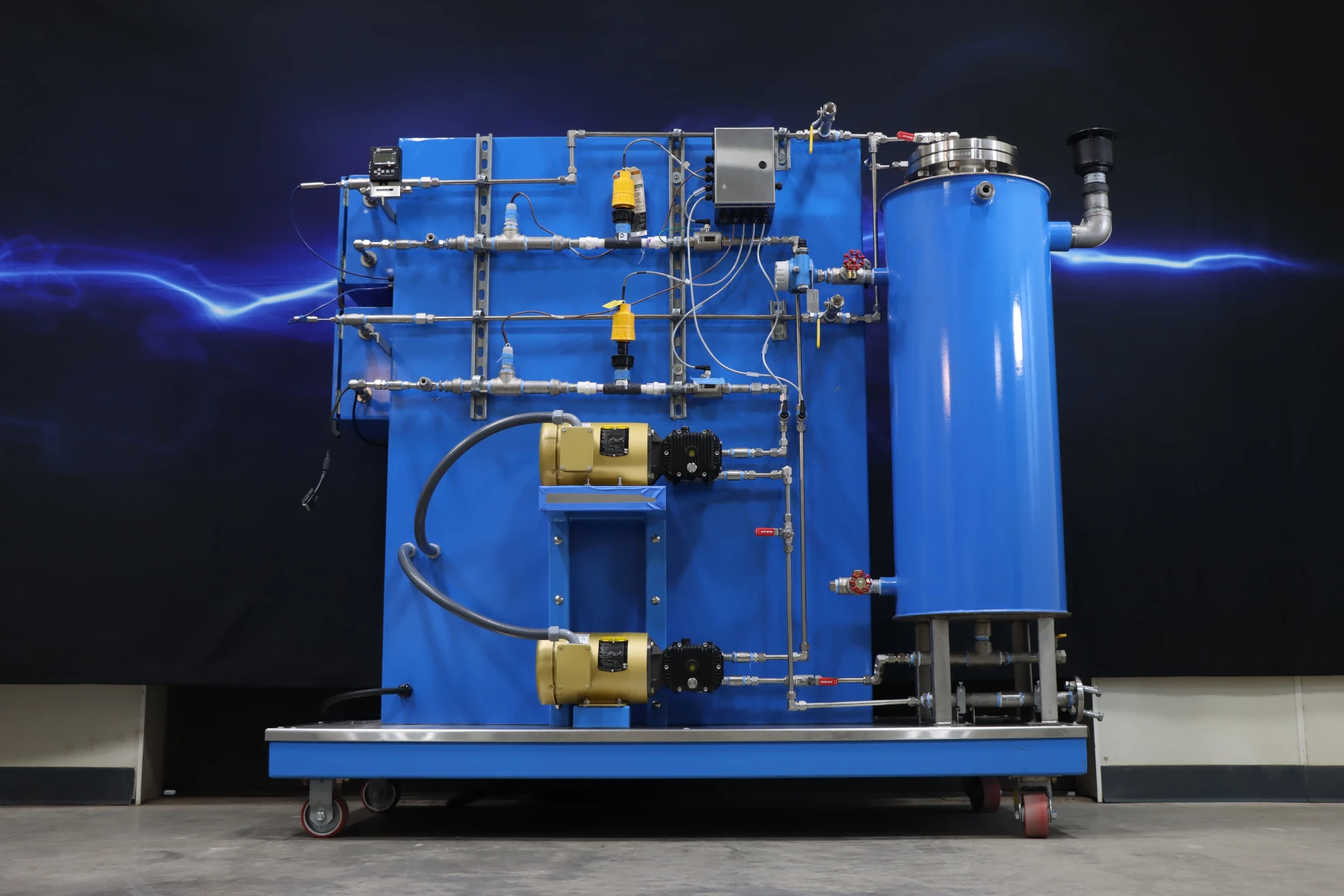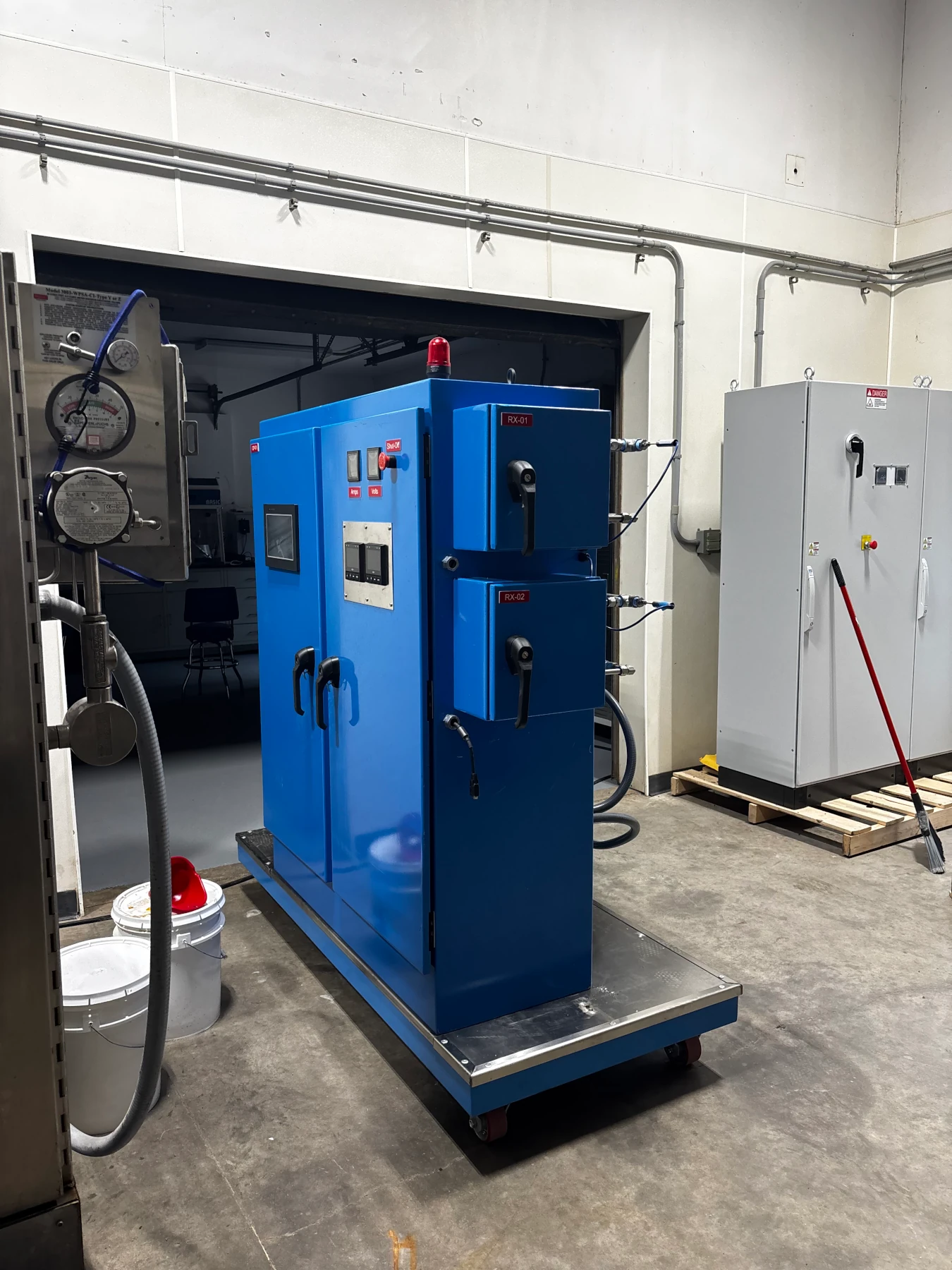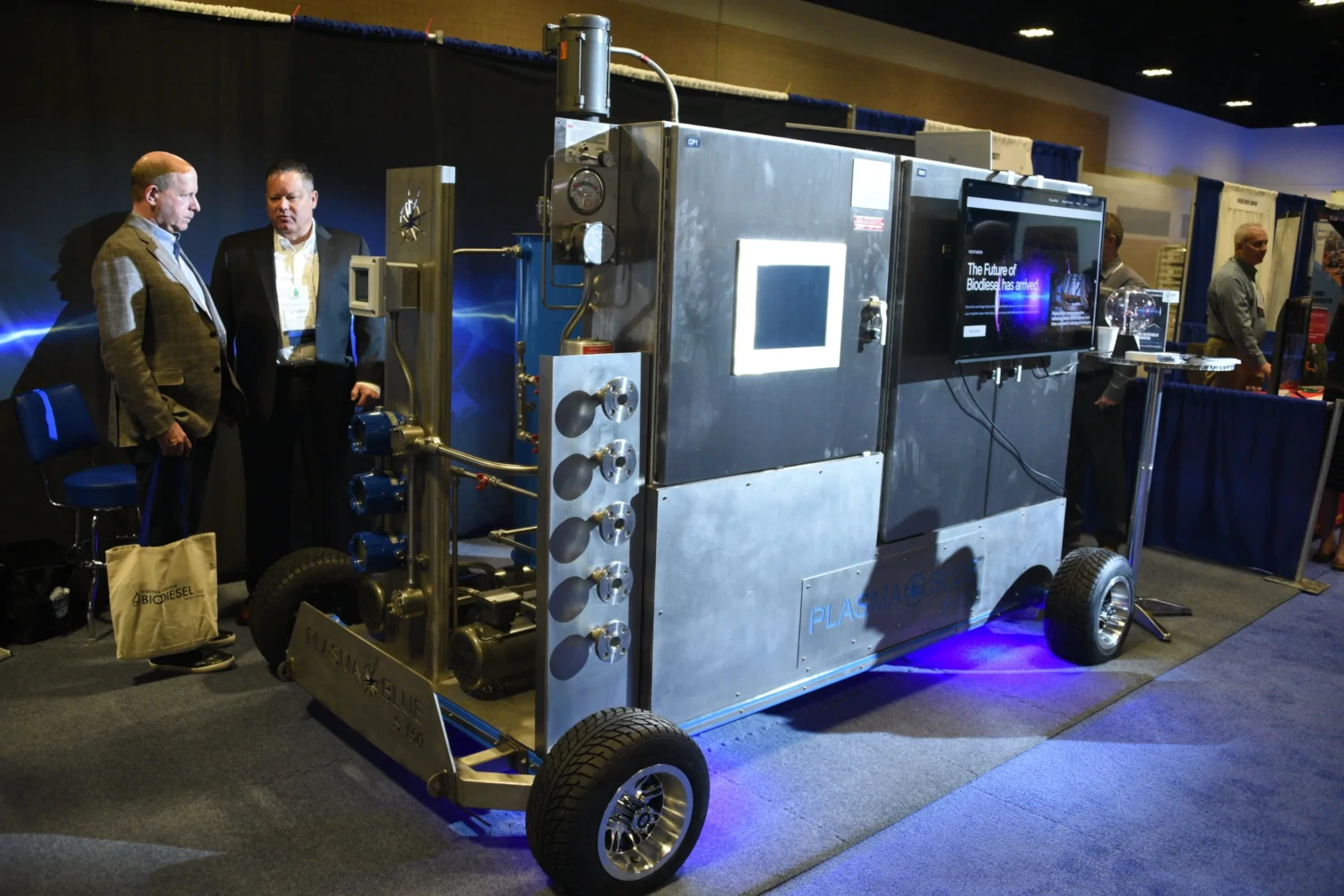How Plasma Blue Works
Plasma Blue technology is a powerful new tool that is safer, efficient, energy-saving with low impact on the environment. It efficiently uses renewable green energy to clean the environment, providing cost-savings while cutting carbon.
The technology has expanded to injecting cold plasma, or non-thermal plasma, into a stream of water in a continuous flow, hyper-exciting electrons and attacking their bonds, ultimately changing the composition of the liquid stream. This dismantles harmful chemicals like per- and polyfluoroalkyl substances (PFAS), known as “forever chemicals,” a group of man-made synthetic chemicals that are resistant to heat, water and oil.
By using targeted electrical currents that hyper excites electrons, this technology can change the composition of liquid streams which previously could only be done with high temperatures-mixing high pressure or strong chemicals.
Plasma Blue technology is the only technology that can offer CapEx & OpEx distribution of PFAS.

There are two ways to utilize plasma technologies: consolidation and destruction.
Consolidation includes reverse osmosis, granulated carbon and foam fractionation. The biggest issue with these is what to do with the heavily contaminated water that’s been consolidated. These systems require excessive maintenance, replacement of filter mediums and the added costs of removal of high concentrated water.
Destruction includes incineration, supercritical water oxidation and hydrothermal alkaline treatment. These options have major Op ex and Cap ex requirements because of the utilization of harsh chemicals, temperatures up to 1,000 degrees Celsius and pressures around 221 bar.

Plasma Blue is also a destructive technology. The utilization of cold plasma translates to lower energy use and ultimately cost savings while still destroying PFAS or mineralizing it into carbon and fluorine. Temperatures in our process only reach around 100 degrees Fahrenheit (38 degrees Celsius) and the PSI level of our system operates around 130psi.
Low levels ensure the system is safe for operators and the infrastructure around them. Depending on the level of PFAS contamination, destruction costs below the regulated four parts per trillion can be as low as 10 cents per 1,000 gallons. Dramatically lower than all other systems.
Plasma Blue has developed a process that uses plasma to destroy PFAS without high heat, pressure or caustic chemicals. It uses renewable green energy to clean the environment, providing cost-savings while cutting carbon and fluorine. In validated benchtop testing, Plasma Blue’s unit destroys PFAS to non-detectable levels. Benchtop testing in a single pass of concentrations of PFAS demonstrated an ability to destroy >93% of PFAS. By using targeted electrical currents that hyper excite electrons, this technology can change the composition of liquid streams, which previously could only be done with high temperatures-mixing high pressure or strong chemicals.
Key Features of Plasma Blue Technology
- Disinfection: The reactive species generated by the plasma can kill bacteria, viruses and other pathogens in water.
- Contaminant removal: Plasma Blue technology can break down organic and inorganic pollutants, making it suitable for treating wastewater and industrial effluents.
- Odor control: Plasma Blue treatment can also help reduce unpleasant odors in water.

PFAS removal with our units
Plasma Blue, with its generation of plasma at low temperature and pressure, is designed to ensure chemical bonds are broken down. It uses renewable energy to clean the environment, providing cost-savings while cutting carbon. In validated benchtop testing, Plasma Blue’s unit destroys PFAS to non-detectable levels. By using targeted electrical currents that hyper excite electrons, this technology can change the composition of liquid streams, which previously could only be done with high temperatures-mixing high pressure or strong chemicals.
Environmental Impact
Our process minimizes environmental impact while maximizing efficiency, making it a cost-effective solution for industries and communities grappling with PFAS pollution. It uses low power and no chemicals to create the result of minimizing the contamination. This is done on site as well to keep from spreading contaminants.
What is Plasma?
Discovered in 1879 by Sir William Crookes, plasma is the fourth and most common state of matter made up of a collection of neutrals, ions and electrons characterized by a collective behavior. It accounts for more than 99 percent of all matter in the universe.
Plasma is a state of matter, often referred to as the fourth state, distinct from solid, liquid and gas. This ionized gas (plasma) contains positively and negatively charged particles, primarily in the form of ions and electrons. This makes plasma electrically conductive, which transforms plasma into a powerful tool. Today, plasma is used in many applications, including ozone generation, ammonia synthesis, welding and semiconductor production.
Two types of plasma:
Hot plasma or thermal plasma (ex: the sun, lightning)
- A type of low-temperature plasma where the electron, ion and neutral components have equal temperature
Cold plasma or non-thermal plasma (ex: neon signs, fluorescent lights)
- Cold plasma generates very little heat, only exciting, or heating, the electrons, not the nucleus of the molecule. This process allows the generation of plasma at low temperature and pressure, leading to a large concentration of highly reactive ions and molecules.
What makes Plasma Blue so effective
Free radicals are highly reactive molecules or atoms that have unpaired electrons in their outer shell. They play a significant role in various chemical processes, including those involving plasma. In plasma water treatment, the free radicals present in plasma can effectively disinfect water by attacking and destroying pathogens, such as bacteria and viruses, and chemicals, such PFAS and PCB. These free radicals offer advantages, including:
- Reactivity: Free radicals are highly reactive due to their unpaired electrons, which makes them seek out other molecules to bond with, often resulting in chain reactions. This reactivity is a key feature that allows them to participate in various chemical reactions.
- Short lifespan: Free radicals typically have a very short lifespan, often existing for only microseconds to milliseconds before reacting with other molecules.
Plasma Blue.
Results You Can See.
A revolutionary process technology company that focuses on harnessing the power of plasma to create reactive species that can effectively disinfect water, remove contaminants and improve water quality.

